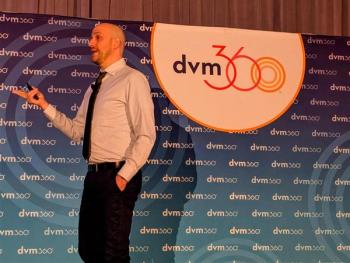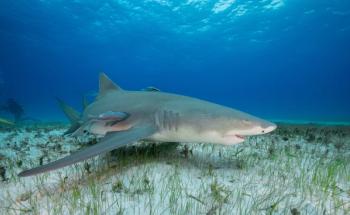
Imaging the urinary tract: Correct use of radiography and ultrasonography (Proceedings)
Survey radiography is commonly used to image the urinary tract and provides information on size, shape, opacity, location and, margination of urinary organs. This modality is rapid and cost effective for screening animals with suspected urinary tract disease.
Survey radiography is commonly used to image the urinary tract and provides information on size, shape, opacity, location and, margination of urinary organs. This modality is rapid and cost effective for screening animals with suspected urinary tract disease. Contrast procedures, including cystography and excretory urography, are special radiographic procedures that provide additional information. Cystography is performed with positive and or negative contrast media and is used to identify calculi, mural changes and bladder rupture. Positive contrast urethrography is often performed in male dogs and cats to detect urethral lesions such as stenosis, rupture or calculi. Excretory urography opacifies the excretory pathway-kidneys to urethra and is valuable for studying the renal parenchyma, pelvises, ureters and urinary bladder.
The urinary tract is commonly evaluated when clinical signs of urinary tract problems are observed and is complimentary to radiographic findings because the internal architecture of organs can be observed...
Ultrasonography is useful for evaluating the presence of lower (bladder and urethra) and upper (kidneys and ureters) urinary tract disease. Diagnostic information can be obtained at little or no risk to the animal and is not compromised by the presence of disease. Urinary tract ultrasonography is often used in lieu of excretory urography and cystography.
Radiography of the urinary tract
• Technical considerations
o Regular or high speed screens with long scale contrast if analog
o Digital images provide excellent scale of contrast and are equal or superior to analog
o Two views = standard, must make extra lateral to visualize os penis and urethral in males.
• Conditions identified with survey radiography
o Renomegaly and decreased renal size
o Change in shape
o Solitary kidney
o Retroperitoneal swelling/loss of contrast
o Radiopaque urocalculi
o Bladder masses
• Excretory urography
o Indications
1) Confirming rupture of the excretory pathway
• Pelvis, ureter and bladder
• Important in trauma cases
2) To determine renal size, shape and location
3) Confirm renal mass lesions suspected on survey radiographs
4) Visualization of the renal pelves, ureters and urinary bladder (ex. ectopic ureters)
5) Qualitative assessment of renal function
• Nuclear scintigraphy is superior—GFR
o Contraindications
1) Dehydration, anuria, severe proteinuria and co-existing congestive heart failure are the most important contraindications in veterinary medicine.
2) Hypersensitivity (rare).
o Technique
1) Contrast media
• Ionic iodinated media
o Meglumine and sodium diatrizoates or iothalamates
o Dose = 400 mg iodine / lb BW, IV
• Non ionic iodinated media—expensive, carry less risk for hypersensitivity.
2) Two views-immediate, 5 min, 15 min, 30 min, 45 min. Oblique views for ureters.
• Cystography
o Includes pneumocystography, double contrast cystography (DCT) and positive contrast cystography
o Conditions identified
1) Bladder rupture (positive contrast)
2) Cystitis (double contrast)
3) Neoplasia
4) cystic calculi (double contrast)
5) Location of urinary bladder in relation to surrounding viscera, e.g. prostate (pneumocystography). Defines prostate
6) Anatomic defects (double contrast)
o Contraindications
1) Known hypersensitivity to iodinated contrast media (rare)
2) Known vascular lesion—pneumocystogram-risk for air embolism
o Contrast media
• Air or carbon dioxide
1) Ionic iodinated media (sometimes diluted 50/50 w/ HOH)
2) Can also use non ionic, but more expensive
o Notes
1) Balloon tipped catheters recommended
2) Distend urinary bladder fully and to effect, do not calculate dose and inject—palpate while injecting and stop when distended. For instance fibrotic urinary bladders will not distend normally.
3) For DCT, add air, then contrast medium to prevent air bubbles
4) Make x4 90 degree orthogonal projections for DCT.
• Urethrocystography
o Indications
1) Diagnosis of strictures, calculi, neoplasms and rupture of the urethra
2) Partial or complete urinary obstruction
3) Evaluation of the prostate
4) Contraindication-patient at risk for air embolism
o Contrast media
1) Air, perform pneumocystogram first
2) Same as for cystogram
o Notes
1) Best suited for males
2) Make radiographic exposure during mid-injection
3) Additional lesions may be identified with simultaneous pneumocystogram.
Ultrasound examination of the urinary tract is performed for the following: palpable abnormalities of the kidneys or urinary bladder, laboratory evidence of urinary tract disease, dysuria, hematuria, poor visualization of the kidneys or suspected urolithiasis on survey radiographs, and suspected trauma. Various classifications have been offered for discussing urinary tract diseases.
Diffuse and focal renal abnormalities can be detected with ultrasonography in animals. Hyperechoic kidneys may be associated with diffuse infiltrative diseases. Kidneys with end-stage disease are often diffusely hyperechoic, have poor corticomedullary delineation and have an irregular shape. However, kidneys with glomerular disease may appear normal and the cause of end-stage renal disease can rarely be determined with ultrasonography. Other causes of hyperechoic kidneys include ethylene glycol toxicosis, diffuse neoplasia and normal lipid deposition in adult cats. Hypoechoic kidneys are infrequently encountered, but lymphoma is a potential cause. Focal abnormalities can include metastatic neoplastic nodules infarcts, granulomas and cystic lesions. The latter includes solitary and polycystic disease and perirenal pseudocysts of cats.
Pathologic changes of the renal pelvis are well seen with ultrasound examination. Renal calculi are hyperechoic and cause a distinctive artifact called acoustic shadowing even with low mineral content. Dilation of the renal pelvis and or ureters associated with pyelonephritis and obstruction are easily identified with ultrasound.
Cystosonography is useful for a variety of conditions of the urinary bladder and has nearly replaced contrast cystography because ultrasound examination is rapid and non invasive. Conditions evaluated include neoplasia, calculi, etc, the same that can be seen with cystography.
Radiography remains an excellent method for surveying animals with urinary tract disorders and is complimentary to the ultrasound examination.
Reference
Widmer WR, Biller DS, Adams LG Ultrasonography of the urinary tract in small animals. JAVMA, Vol 225, No. 1, July 1, 2004
Newsletter
From exam room tips to practice management insights, get trusted veterinary news delivered straight to your inbox—subscribe to dvm360.





